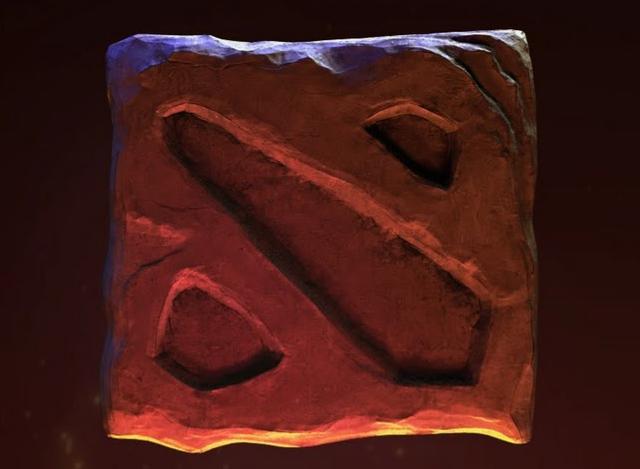DOTA 2, or Defense Of The Ancients, the sequel to the most popular video game modification of all time, has recently been released to the public after a long time in the cocoon of development that its publisher, Valve, has kept it in. Boasting an average daily player count of over 500,000 people (which is more than other popular games such as Call of Duty 4, Team Fortress 2, or Counter Strike have combined) with thousands of hours in cumulative play time, and many times as many people tuning into online video streams of competitions worth millions of dollars, there is little denying that DOTA 2 has become one of the most popular games today. But with many developers in the gaming climate today trying their hand at the MOBA (multiplayer online battle arena) formula, I’m glad to say that DOTA 2 stands out from the pack.
MOBA games vary in details, but all share the same base formula. The game is a top-down viewpoint game where two teams, made up of five players each, choose a unique hero with 3 unique skills and one “ultimate” skill to use in the match. The map is divided into two mirrored territories (the “dire” and “radiant” sides), each team having 3 main “lanes” that lead from one team’s base to the other. 3 groups of “Creeps,” which are artificial intelligence minions, spawn from each teams base and make their way down the lanes before clashing with the other team’s creeps in the middle of the map. Killing these minions yield gold and experience for the heroes for use in buying helpful items and leveling up skills and stats, respectively. Each hero then splits up (usually into teams of two, with one person going solo) into the lanes to take down the enemy team’s towers, which are powerful structures that attack hostiles in a certain radius. Each team has a total of 11 towers: 3 for each lane and two that lie by the team’s “ancient,” which is the ultimate goal of the game: destroy the opposing team’s an ancient, and you win. This entire process takes an average of about 40 minutes to an hour. DOTA 2 follows this example, but refines and perfects it to the best in the genre’s history.
While this may sound complicated, the base skills are easily grasped after a few minutes of gameplay. The real challenge, and the real fun therein, lies with learning the more complicated concepts necessary for effective playing. Ganking, warding, farming, jungling, stacking, Roshing, pushing, and harassing are just a sampling of verbs that, without context, are probably nonsensical to newcomers to the game. But more seasoned players know these and many, many more, with each of them having and/or making up a staggering multitude of strategic layers that make the above paragraph’s rules seem as simple as a game of tick-tack-toe. Let it be known that DOTA 2 is hardly a game for the faint-hearted; but if you’re willing to stick around and give it a fair chance, the craggy exterior of difficulty the game imposes on you opens up into an incredibly unique experience.
To mitigate the learning curve, Valve, in it’s nearly legendary game-developing wisdom, has incorporated a series of step by step tutorials for newcomers to take advantage of in their quest for competency. Players of higher skill can likewise utilize bot games, teaming up with other players or even more bots to make war in practice matches against a customizable AI, from “wimpy” difficulty to the aptly named “cheating” tier bots offering quite the tribulation that challenges even professional players to offer an easy way to hone skills for ranked matches. The game does an excellent job in these tutorials by making the concepts easy to learn without overwhelming through use of a step-by-step format that I’m sure will be a godsend to many newcomers.
While there are plenty of other MOBAS on the market, the thing that makes DOTA 2 special, to quote everyone’s favorite ogre, is layers. Other similar games have their own unique components, but DOTA easily surpasses them in size, number, and complexity. From couriers to runes to secret item shops and many more, Valve clearly made the right decision to hire IceFrog, the creator of the original DOTA mod, to direct development for the sequel. These types of games are complicated by default, but these new mechanics, once players get a feel for them, add new layers of strategy and gameplay that never could have existed without them. And these layers the game had anyway were astounding! Between the number of heroes to choose from, the skills they us and how they can compliment your teammates skills, the many items with unique and upgradeable abilities on top of the bonuses they give…all these things and many, many more all work together and, with proper strategy and timing, can lead to a perfectly executed escape or a brutally efficient killing spree. The feeling that arises when everything goes exactly as planned and your enemies’ ancient implodes into a gratifying cascade of rubble is one of the greatest forms of satisfaction I have ever encountered in a video game.
One of the best parts of the game to many people will probably be the price tag: zero pennies. While Valve has integrated ways for people to pay for cosmetic items, they are just that: cosmetic. that costume set for Meepo may look cool, but expect no stat bonuses to come from it. That is what attracted me most to DOTA 2: every player is on an equal level, and people willing to pay a bit extra don’t get an advantage for it like in other MOBA games (*cough League of Legends cough*).
The one thing this game needs to truly shine, however, is better matchmaking. As this is a team game, most of the average player’s matches will be done through finding random teammates, and I can guarantee you that for every match that is as exhilarating and fun as the game should be, you will have at least one match where you are paired with absolute idiots. Especially for new players, during your first few matches you can and will be spending a half an hour in a confusing array of deaths, long spawn times, and getting caught in the middle of being cussed out by your teammates or blamed for things that weren’t really your fault. Many players can be for the most part, toxic at best and downright jerks at worst. Though you obviously can’t pick exact people out of the random crowd (though you can make a party and play with friends), Valve needs to work more with monitoring players’ progress to match them with others of similar skill level. Furthermore, the difficulty of playing “adequately” in a general sense will turn many potential players off; if everything I’ve described sounds difficult, let me tell you, it isn’t. It’s downright hellish. Coming to these games as a beginner would be a trial that I wouldn’t wish on my worst enemy, and learning the ropes alone will push away many potential players.
That being said, however, these are the kinds of things that are to be expected from any online game in today’s world, and the experience that waits at the end of the road is intensely rewarding. Between the perfected formula, the excellent integration of tutorials for newcomers, and the interesting new features adding fun and challenging new facets to the game, DOTA 2 is a real gem, especially with the price tag of $0. If you can get a handle on the controls and aspects of the game, it will open up and give you one of the best experiences you can have in today’s gaming environment. Just don’t expect it to come easy.







